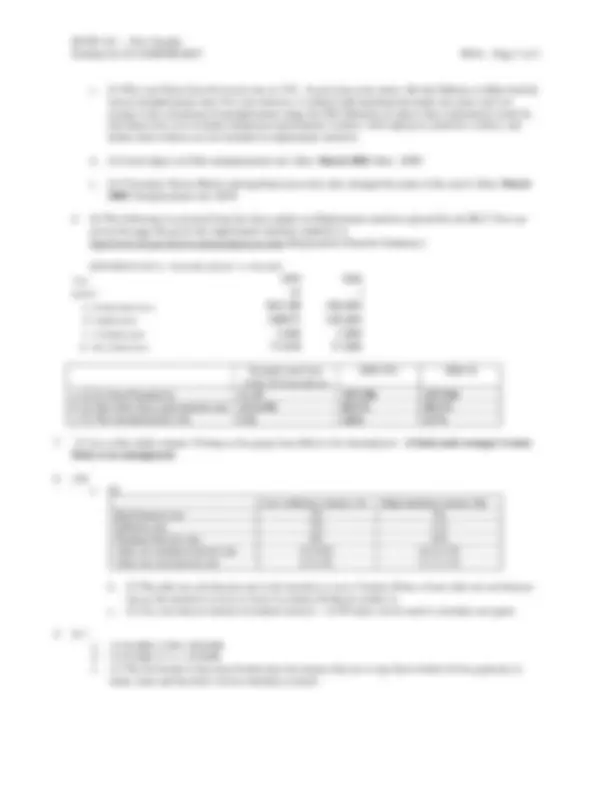



Study with the several resources on Docsity

Earn points by helping other students or get them with a premium plan


Prepare for your exams
Study with the several resources on Docsity

Earn points to download
Earn points by helping other students or get them with a premium plan
Community
Ask the community for help and clear up your study doubts
Discover the best universities in your country according to Docsity users
Free resources
Download our free guides on studying techniques, anxiety management strategies, and thesis advice from Docsity tutors
The answer key for problem set #5 of economics 101, covering topics such as inflation, gdp, and unemployment. It includes calculations and explanations for various economic concepts, including nominal and real gdp, population growth, hdi rankings, and inflation adjustments.
Typology: Assignments
1 / 3

This page cannot be seen from the preview
Don't miss anything!


Problem Set #5 ANSWER KEY PS5A – Page 1 of 3
Year Price of Soda (Ps) Quantity of Soda (Qs) Price of Jeans (Pj) Quantity of Jeans (Qj) 1999 $0.50 200 $10.00 50 2000 $1.00 220 $12.00 50
a. (6) Nominal GDP Real GDP GDP Deflator 1999 100+500=600 600 100 2000 220+600=820 110+500=610 134.
b. (2) (134-43-100)/100= 34.43% c. (2) (610-600)/600≈ 1.67% d. (2) 70/1.67 ≈ 42 years (43 if we use the “rule of 72”!)
(4) a. Estimated Population 4/24/06 at 14:14 GMT (EST+5) is 298,588,143 – Nominal yearly GDP last estimate is $12,766.1 billion (last estimate 4th quarter 2005) so the GDP per capita is approximately US$42,
b. (2) Per capita GDP growth ≈ GDP growth – Population growth = 3%
c. i. (4)
HDI rank Life Expectancy rank Education rank GDP rank United States 10 Tied for 29 (6) tied for 12 (10) Tied for 2 (3) Sweden 4 (3) Tied for 5 (4) tied for 1 (9) 20
ii. (4) Life expectancy drives the results here. Even though Sweden has a lower adjusted purchasing power per capita, it score high in life expectancy. (Swedish people live longer on average 80.2 vs 77.4 in the US). The US scores high in adjusted purchasing power but all this consumption is not enough to compensate for the fact that people in the US on average live shorter lives. Education levels do not make the difference even though the rankings also go in opposite direction to GDP levels. This is just from observing that the actual scores are very close for countries at the top and the rankings could easily be reversed.
iii. (2) Education would not be affected by items not included in GDP as much as life expectancy would. The quality of the environment and the amount of leisure time would be likely to affect life expectancy. Take for example leisure time. Stress and hard work is negatively related to life expectancy (you can look at life expectancy of people in different kinds of jobs if you are not convinced). Leisure time is not valued in GDP. A GDP corrected for leisure would probably place the US further down the list since US workers tend to work longer hours and have (or take) less vacation time. It is likely that a GDP including the value of leisure time would be more closely correlated to life expectancy. [Of course other things will matter like the type of health care, social programs, eating habits, etc. but these would be difficult to relate to the problems inherant to GDP calculations…]
Problem Set #5 ANSWER KEY PS5A – Page 2 of 3
Name of Movie Year of release
Non-adjusted Gross
CPI index for year of release (base 1967)
Adjusted gross (1967 prices)
Adjusted Rank of the movie
To express values accrued in year X in constant dollars of year Y, use:
Revenue in current dollars of year X × (CPI of year Y/CPI of year X)
NOTE : I gave the same question in the past and ET had a different gross – This raises an important question…. ET was re-released and the gross was added in current value. Adding current values from different years makes it very hard to adjust for inflation and make any sense of our comparisons. Correcting the added recent gross using the 1982 CPI when $35 million US dollars (my number in 2000 was 400) were actually collected in 2001 causes a problem!!!
b. NO! The base year makes no difference when calculating inflation. The relative values and rankings would be the same.
a. (2) Price of oil in current dollars of 1957 (CPI 1949/CPI 1957) = 0.53 × (71.4/84.3)= $0.45 (1949 dollars)
b. (2) Price of oil in current dollars of 1949 (CPI 2001/CPI 1949) = 0.44 × (530.4/71.4)= $3.27 (2001 dollars)
c. (2) The real price in constant 2001 dollars went from $3.27 in 1949 to $3.77 in 2001. The real price of oil went up by (3.77-3.27)/3.27 = +15.3%
d. (2) No. The choice of the base year makes no difference, % increase remain the same if all numbers are multiplied by a constant.
a. (3) Current Employment Survey “Each month state agencies collect data on employment, hours, and earnings from a sample of nearly 350,000 nonfarm establishments which employ nearly 40 percent of the total nonfarm population”
b. (6) i. Are part time workers included in the labor force? YES ii. Would a worker who was on strike over the whole survey period (month) be considered employed? NO iii. Would a person on leave without pay be counted as employed? NO iv. Would a worker who receives only $50 of pay for work at a grocery store during the month be considered employed? YES v. Are domestic workers counted as employed? NO vi. Are self-employed individuals included in employment statistics? NO